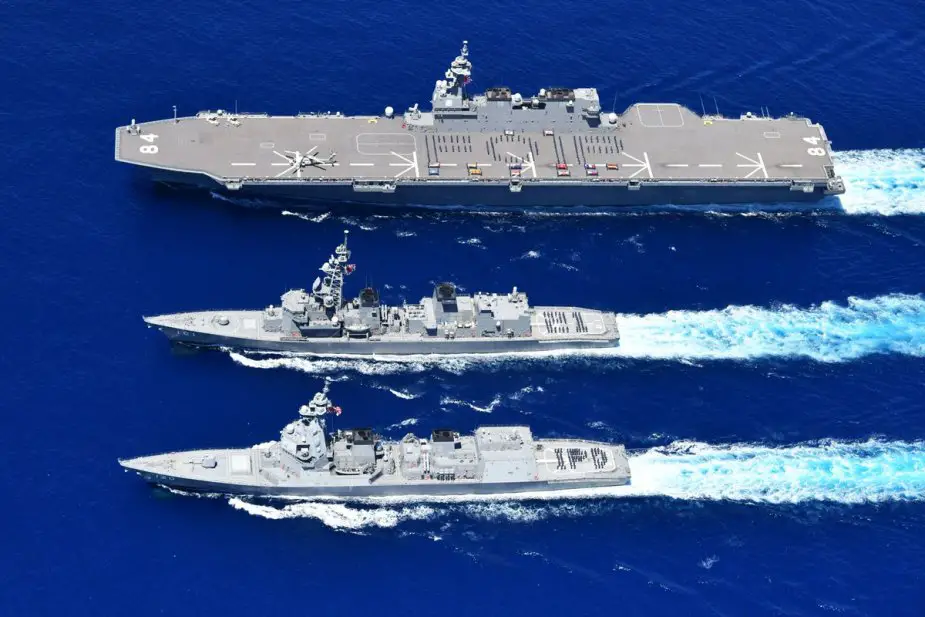Breaking news
Japan will deploy the new aircraft carrier JS Izumo in Indo-Pacific.
According to a tweet published by the Japanese MoD on May 31, 2022, the JMSDF will conduct an Indo-Pacific deployment from June 13 to October 28. This exercise will include the aircraft carrier IS Izumo, and the destroyers JS Takanami and JS Kirisame.
Follow Navy Recognition on Google News at this link
 The aircraft carrier JS Izumo and the destroyers JS Takanami and JS Kirisame (Picture source: JMSDF)
The aircraft carrier JS Izumo and the destroyers JS Takanami and JS Kirisame (Picture source: JMSDF)
JS Izumo (DDH-183) is a helicopter carrier that, as of 2022, is being converted into a light aircraft carrier. Officially classified as a multi-purpose operation destroyer, she is the lead ship in the Izumo class of the Japan Maritime Self-Defense Force (JMSDF).
The aircraft carrier has a length of 248 meters (813 feet 8 inches), a beam of 38 meters (124 ft 8 in), and a draft of 7.5 meters (24 ft 7 in). She can reach a top speed of 30 knots (56 km/h).
The ship is powered by four GE/IHI LM2500IEC gas turbines and has a displacement of 19,500 long tons (19,800 t). She can carry up a complement of 970 sailors.
The Izumo-class is armed with 2 x 11 Cell SeaRAM missiles able to destroy supersonic and subsonic threats including cruise missiles, drones, and helicopters, two Phalanx CIWS Close-In Weapon Systems, and two Triple 324mm torpedoes tubes.
The ship can carry up to 28 aircraft, or 14 larger aircraft. Only seven ASW helicopters and two SAR helicopters are planned for the initial aircraft complement. For other operations, 400 troops and 50 3.5-ton trucks (or equivalent equipment) can also be carried. The flight deck has five helicopter landing spots that allow simultaneous landings and take-offs.
The first elevator (20m long x 13m wide) is an inboard type located on the centerline of the flight deck, and the second elevator (15m long x 14m wide) is a deckside type. This clears the flight deck and hangar aft, increasing the effective area and dramatically improving the aircraft's operational capacity.
In 2020, Izumo began the conversion to operate F-35B fighter aircraft. Conversion works were to proceed in two stages, with the first to strengthen the heat resistance of the deck and install power supply equipment to enable the departure and arrival of the F-35B.


























